The Phanteks Enthoo Pro Case Review
by E. Fylladitakis on March 30, 2015 8:00 AM EST- Posted in
- Cases/Cooling/PSUs
- Full-Tower
- Case
- Phanteks
Test setup
Professional testing requires the emulation of real-world situations but with repeatable results; thus, a perfectly controllable test setup and environment are required, especially for comparable results. Testing the thermal performance of any case with a typical real-world setup technically limits the comparability of the results to this setup alone, as an active system interacts with its environment and the change of a single component would alter myriads of variables. As such, we developed synthetic loads that emulate the thermal output of real systems, which however are passive, steady and quantifiable. As such, the thermal testing now displays the thermal capabilities of the case alone, as if it would have to deal with the entire thermal load by itself, regardless of the system that would be installed inside it. Laboratory data loggers are being used to monitor the PT100 sensors and control the safety relays, which are fully accessible via our custom software. Three such loads have been developed; the ATX version simulates a 200 W CPU, 50 W VRM, 30 W RAM and 4 × 120 W GFX card thermal load. Finally, three 3.5" HDD dummy loads have also been created, with each of them converting 30 W of electrical power to thermal, bringing the total thermal load of the ATX test setup up to 850 Watts. As such, the thermal load is immense and only the best of cases will be able to handle it for more than a few minutes, we are also performing a test with a thermal load of 400W, with all of the aforementioned components except the HDD drives at about 42% power, which is more suitable for the majority of cases.
Thermal testing has been performed with the stock fans operating at maximum speed. Noise testing has been performed with a background noise level of 30.4dB(A). Advanced noise testing is also being performed, in order to assess the ability of the case to dampen the noise of the components installed inside it. This includes the installation of two noise-generating sources (strong fans) inside the case, one positioned approximately over the first expansion slot and one over the CPU area, which generate ≈ 44.2 dB(A) when unobstructed. During the advanced noise test, all stock cooling options of the case are entirely disabled.
Results and discussion
Even though the stock thermal performance of the Enthoo Pro is not going to set any performance records, Phanteks' design can compare with other cases of similar size that are aimed at the same group of consumers. It outperforms the similarly priced XFX Bravo Type-01 and it falls a little behind the Corsair Graphite 760T, which however is currently retailing for nearly twice the price of the Enthoo Pro. The thermal performance of the Enthoo Pro is almost identical with that of the Corsair Obsidian 450D, a more expensive and considerably smaller case.
The stock cooling fans are meant to compromise between thermal performance and comfortable acoustics, meaning that they are neither too strong nor entirely silent, yet they manage to keep the temperatures within acceptable levels without generating too much noise. They are audible at their maximum speed but the noise level is borderline comfortable for home users. Their noise levels drop significantly at lower speeds, making them nearly inaudible at 50% speed. With the PWM fan controller present in the Enthoo Pro, these fans should maintain negligible noise levels while the system is performing casual everyday tasks and turn audible only when the processor load increases significantly, such as during gaming.
The Enthoo Pro is a case that has been designed for cooling performance. With so many openings, its capability to reduce the noise generated by components inside the case is very limited. It managed to reduce the noise coming from our artificial noise source by 1.6db(A), a measurable figure but nevertheless this change is imperceptible by ear - the vast majority of humans can differentiate between noise sources only if there is a change of at least 2.5dB(A) (most require a change of at least 5dB(A) to notice the difference).


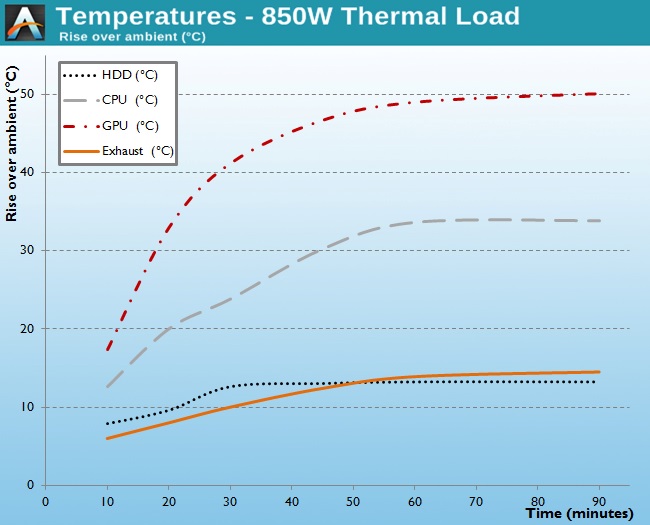
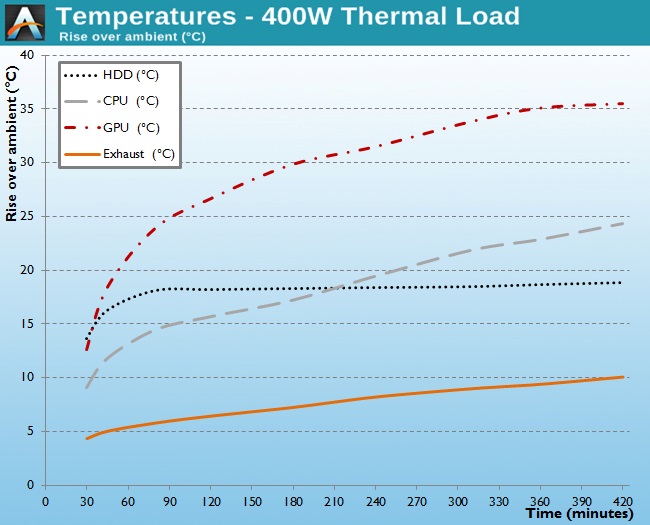
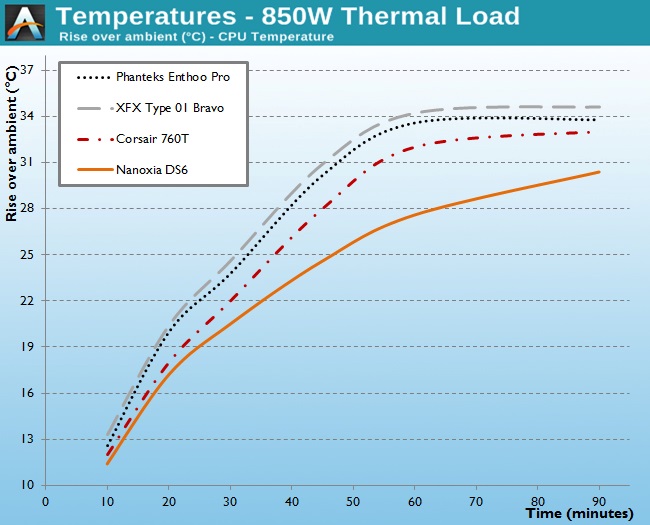
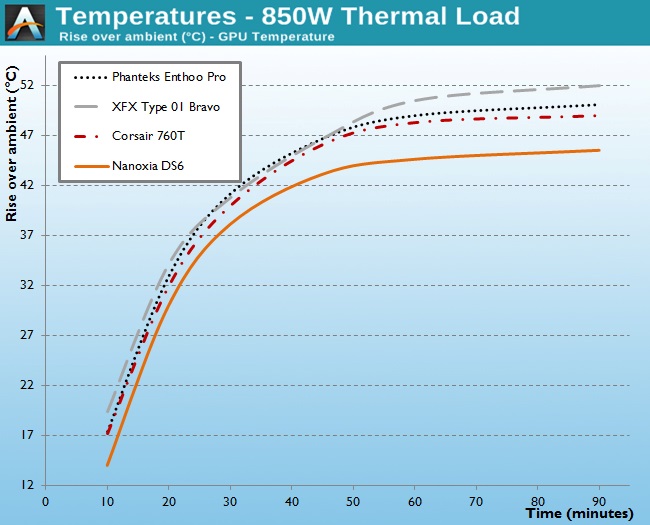
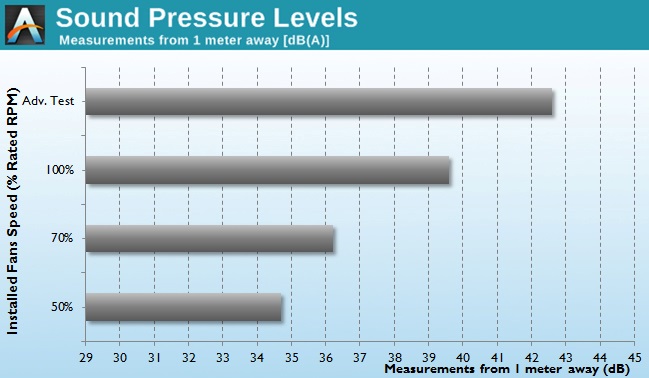








50 Comments
View All Comments
kepstin - Monday, March 30, 2015 - link
I think like the drawing on the box was in isometric perspective; the issue is that the picture of the box was taken at an angle. If you look at the side of the box straight on I expect it would look ok.Coffeehead - Monday, March 30, 2015 - link
True. It's an isometric projection. The proportional sizes of each line is preserved and each of the x,y,z axes are separated by 120°. It is supposed to make measurements easier to take for engineers, but the visual perspective projection is what we consumers are used to seeing because we want to buy what we see.It's also the basis of how the art illusion drawings of M.C. Escher used isometric projections.
DanNeely - Monday, March 30, 2015 - link
Is the severe face plate damage you're referring to just the scuffed up top front edge; or was something else broken too. The scuffing isn't good; but I'd've expected something to at least be cracked before it was called severe damage.DanNeely - Monday, March 30, 2015 - link
I'm not picking on this case in particular, since it appears to be an industry wide problem; but if you're going to build a case around bottom air intakes you need to use feet big enough to lift the case up above a carpeted floor. Having to suck air in through the carpet really reduces the total flow, and even with the case having a built in dust filter, after only a few months the intake of the PSU in a case I had like this got horrifying nasty. I've had boxes that went years before being blown out that had less dust in them. I'm not sure what I'm going to do with that case; probably either look for taller aftermarket feet somewhere, or drill new mounting holes in the back so I can flip the PSU over to point its fan up and draw air from the rest of the case instead.BillyONeal - Monday, March 30, 2015 - link
That's why Silverstone's FT02 is still one of the best cases ever -- it has its own "channel" in the side of the case to pull air in for the bottom intakes which works great for the carpeting problem.Dug - Monday, March 30, 2015 - link
Silverstone FT05 has a flat solid surface for the base, but the bottom case fans are about 2-3 inches up from that so you have air coming in from the sides and then up.bigboxes - Monday, March 30, 2015 - link
Funny about the illustration on the packing box. That said, this is one butt-ugly case. That power button is way too small and the top panel connectors should not be hidden under that door. Just something that will be left open anyways.xthetenth - Monday, March 30, 2015 - link
The power button isn't particularly small and isn't difficult to hit in the slightest. The door isn't in the way when it's open and being able to close it is kind of nice. I have the Luxe, which is one step up from that, and while I have a few minor quibbles about it, it was amazingly easy to put together a really nice looking build with it.Peichen - Monday, March 30, 2015 - link
Such a traditional and old design. I think an ideal case as mATX with 1x 5.25", 2x 2.5/3.5", 4x 2.5" drive cage. 2x 120/140/180mm fans w/filters. Open space around graphic card(s) and CPU cooler otherwise fully sealed to keep dust and sound down.Silverstone TJ08B-E is pretty close but the needs to be updated for SSD and better sealed.
eanazag - Monday, March 30, 2015 - link
But are you using multiple GPUs and have a north of 6 storage drives? I have a hot swap 4 2.5" drive add in that slides into a 5.25" and am considering a second one. I have a DVD burner. That means three 5.25" slots would make sense for me. I can do 2 though.I really don't see the point in 5.25" disc drives anymore being that large. I think they all need to be laptop type slim drives.
This is likely too big for you also.